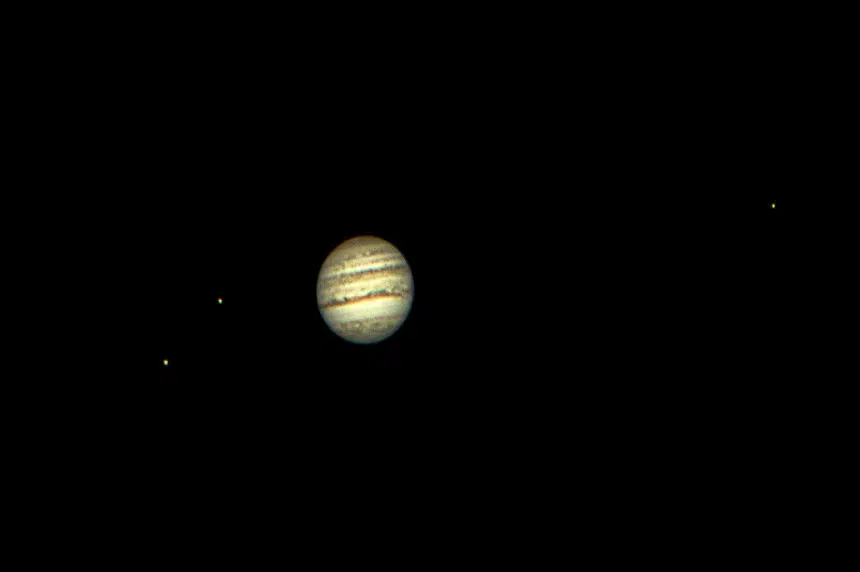By Jaryn Vecchio
You have an opportunity to see something that hasn’t been seen for decades.
“When you go out tonight, probably 30 minutes after sunset, take a look in the eastern sky and look for that brightest star and what you’re going to see is Jupiter,” said Tim Yaworski with the Royal Astronomy Society of Canada’s Saskatoon chapter.
The largest planet in the solar system is the closest it’s been to earth in around 60 years.
While Jupiter can be seen on most nights, it’s very rarely this bright. It’s so bright that people can easily see it with their naked eyes from their own backyard.
“If you’re in a parking lot, surrounded by streetlights shining in your eyes, you will still see it,” Yaworski added.
Those with equipment, like telescopes, will be able to get an up-close view of Jupiter. Those who have binoculars may even be able to see some of the planet’s moons.
For Yaworski, the feeling of seeing something so far away in such detail is something he cherishes.
“We’re looking at a world that’s not only the largest of the planets but a planet that boasts like 79 moons,” he said.
Monday, Sept. 26 is when Jupiter will be at its brightest. For those stuck looking at clouds or simply forget, you’ll still have multiple opportunities to see it as it’ll be visible for months, dimming over time.
“If it’s cloudy (Monday night) you’re not missing the big show,” he said.
Those who miss out over the next couple of months will have to wait for around another 60 years to see Jupiter this bright again.











